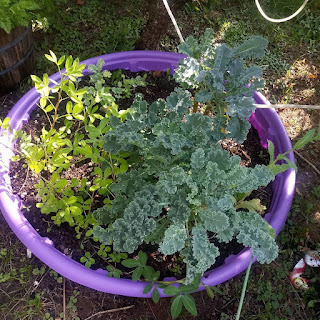As a Natural Perfume
Do you want to smell good without using toxic perfumes? Lavender oil is a great scent for women and for men too. You can either try adding pure oil directly to your skin, or you can dilute oil in water for a more subtle scent.
If you’d like to rub the oil right onto your skin, try adding 2-3 drops into your palms and then rubbing your hands together. Then add the oil directly onto on your skin, clothes, or hair. You can also try using 2 drops of lavender oil added to a spray bottle with about ½ cup of water. Shake up the spray bottle and then spray whatever you’d like. You may also want to consider combining lavender oil with other relaxing oils, like cedar wood essential oil or frankincense essential oil. Combining different oils means you have lots of versatility when it comes to different scent options, without needing to purchase many different bottled, expensive perfumes.
As a Non-toxic Air Freshener
The same way you use lavender oil as a perfume, you can use it around your home as a natural, toxic-free air freshener. Either spray lavender oil around your home or try diffusing it. To create a relaxing atmosphere in your bedroom before you fall asleep, try spraying the lavender oil and water mixture directly onto your bed sheets or pillow. You can try the same method in your bathroom as well, and also on your bath towels. Before taking a relaxing bath or shower, spray your towel with lavender oil so its relaxing scent is waiting for you when you step out of the shower.
As a Natural, Chemical-Free Lip Balm
Lavender oil is excellent for preventing sun burns on the lips and also healing chapped, dried lips. Try adding a couple of drops of oil to shea butter, jojoba oil, coconut oil/coconut butter, or another “carrier oil” and then rubbing it into your lips for protection whenever you will be in the sun. If you are sun burned in other areas on your body, try using the same method to heal the skin more quickly and prevent itchiness and pealing that can result after a bad sun burn.
As a Remedy for Stomach Discomfort
Many people find the scent of lavender to be soothing to the stomach. If you are feeling nauseous, or know that you are going to be traveling in a car of plane and are prone to motion sickness, spray some lavender oil on your skin and clothes or rub it into your temples, next, and palms.
As a Secret Flavor Booster in Healthy Recipes
Lavender is a great flavor enhancer in things like grain-free muffins, teas, and even salad dressings. Lavender oil is completely edible, but you will want to use a very small amount since the taste is very powerful. Try adding 1-2 drops to your recipes for a surprising flavor booster. Lavender is said to pair perfectly with things like dark cocoa, pure honey, cranberries, balsamic vinaigrette, black pepper, and apples.
Lavender Oil Side Effects to Consider
For most people, using lavender oil is completely safe, however there has not been an extensive amount of scientific research done on lavender oil interactions with other medications, or for its use in pregnant women, so there are certain situations where you will want to use caution.
Medication Interactions
If you are already taking any prescription medication for sleep related disorders or for depression, be cautious of the fact that lavender can increase the effectiveness of these medications. Even if you use an over-the-counter sleep aid or any type of sedatives (even cough or flu medicine), keep in mind that lavender makes many people sleepy and even somewhat drowsy, so it’s best to not combine lavender oil with other medications or sleep-related supplements. If you are planning on having surgery or undergoing anesthesia in the near future, you will also want to avoid using lavender oil.
Pregnant Women and Children
There has not been enough research done at this time to show that lavender oil is completely safe for pregnant women or women who are nursing. Because it can have a relaxing effect on muscles and can also effect hormone levels, it’s not recommended that women who are in their third trimester use lavender oil. It’s best to speak with your doctor about use of any essential oils when pregnant, since it has not been guaranteed that these are safe at this time.
Lavender oil is considered generally safe for children to use, although there is some concern that lavender’s effect on hormone levels could be harmful for boys who have not yet gone through puberty. Although there isn’t strong evidence for lavender being a hormone disrupter (only 1-2 very small studies were ever completed), parents are told to use caution if using lavender oil frequently on young children.
Ingesting Lavender Oil
Studies to date have primarily looked at the effects of using lavender oil topically on the skin or inhalation. There have been no negative symptoms found when 3 drops of oil is mixed with a carrier oil and applied directly to the skin, however not much research has formally been done to look at the effect of swallowing the oil. Most people experience no negative symptoms when consuming lavender oil, but because of it’s high levels of anti-oxidants you would want to keep this to a minimum and be careful if you have a sensitive digestive system. There are no known food interactions of lavender oil at this time.












